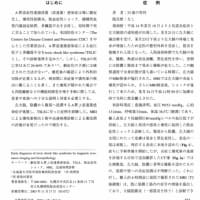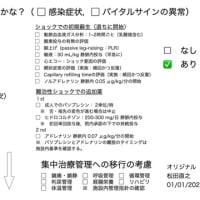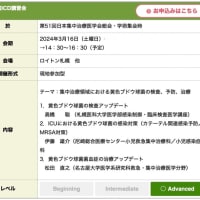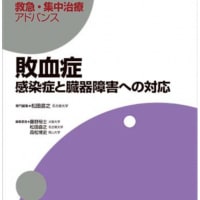Platelets in inflammation and atherogenesis
Meinrad Gawaz, Harald Langer and Andreas E. May
Meinrad Gawaz, Medizinische Klinik III, Eberhard Karls Universität Tübingen, Otfried-Müller-Straße 10, D-72076 Tübingen, Germany. Phone: 49-7071-29-83688; Fax: 49-7071-29-5749; E-mail: meinrad.gawaz@med.uni-tuebingen.de.
Platelet-derived mediators stimulate inflammation
During the adhesion process, platelets become activated and release an arsenal of potent inflammatory and mitogenic substances into the local microenvironment, thereby altering chemotactic, adhesive, and proteolytic properties of ECs (24). These platelet-induced alterations of the endothelial phenotype support chemotaxis, adhesion, and transmigration of monocytes to the site of inflammation (Figure 2).
Released from dense granules, -granules, lysosomes, the canalicular system, or the cytosol, platelets secrete or expose adhesion proteins (e.g., fibrinogen, fibronectin, vWF, thrombospondin, vitronectin, P-selectin, GPIIb/IIIa), growth factors (e.g., PDGF, TGF-ß, EGF, bFGF), chemokines (e.g., RANTES, platelet factor 4 [CXC chemokine ligand 4], epithelial neutrophil-activating protein 78 [CXC chemokine ligand 5]), cytokine-like factors (e.g., IL-1ß, CD40 ligand, ß-thromboglobulin), and coagulation factors (e.g., factor V, factor XI, PAI-1, plasminogen, protein S). These proteins act in a concerted and finely regulated manner to influence widely differing biological functions such as cell adhesion, cell aggregation, chemotaxis, cell survival and proliferation, coagulation, and proteolysis, all of which accelerate inflammatory processes and cell recruitment. For example, IL-1ß has been identified as a major mediator of platelet-induced activation of ECs (25, 26). The IL-1ß activity expressed by platelets appears to be associated with the platelet surface, and coincubation of ECs with thrombin-activated platelets induces IL-1ß–dependent secretion of IL-6 and IL-8 from ECs (26). Furthermore, incubation of cultured ECs with thrombin-stimulated platelets significantly enhances the secretion of endothelial monocyte chemoattractant protein-1 (MCP-1) in an IL-1ß–dependent manner (12). MCP-1 belongs to the CC family of chemokines and is thought to play a key role in the regulation of monocyte recruitment to inflamed tissue and in atherosclerosis (27, 28).
However, platelet IL-1ß does not only modify endothelial release of chemotactic proteins. IL-1ß additionally can increase endothelial expression of adhesion molecules. Surface expression of ICAM-1 and vß3 on ECs is significantly enhanced by activated platelets via IL-1ß (12). Both enhanced chemokine release and upregulation of endothelial adhesion molecules through platelet-derived IL-1ß act in concert and promote neutrophil and monocyte adhesion to the endothelium. IL-1ß–dependent expression of early inflammatory genes, such as MCP-1 or ICAM-1, involves the activation of the transcription factor NF-B. Transient adhesion of platelets to the endothelium initiates degradation of IB and supports activation of NF-B in ECs, thereby inducing NF-B–dependent chemokine gene transcription (29, 30). Likewise, platelet-induced NF-B activation was largely reduced by IL-1ß antagonists, which supports the notion that platelet IL-1ß is the molecular determinant of platelet-dependent activation of the transcription factor. Activation of NF-B involves a cascade of phosphorylation processes. One family of kinases that is involved in NF-B–dependent gene expression is the MAPKs, such as p38 MAPK. In a manner similar to that of recombinant human IL-1ß, activated platelets have the potential to induce phosphorylation of p38 MAPK. Correspondingly, transfection of a dominant-negative p38 mutant significantly reduced platelet-induced MCP-1 secretion in ECs (31).
Once recruited to the vascular wall, platelets may promote inflammation by chemoattraction of leukocytes through mediators such as platelet-activating factor and macrophage inflammatory protein-1, may stimulate smooth muscle cell proliferation (TGF-ß, PDGF, serotonin) (32), and may contribute to matrix degradation by secretion of MMP-2 (33).
A finely regulated functional interaction of platelets with chemokines has also been implicated in atherogenesis (34). Activated platelets can release chemokines and can induce the secretion of chemokines in various cells of the vascular wall; in turn, certain chemokines can enhance platelet aggregation and adhesion in combination with primary agonists and can trigger monocyte recruitment (35). One such candidate for monocyte recruitment is RANTES, which has been shown to trigger monocyte arrest on inflamed and atherosclerotic endothelium (35). Deposition of platelet-derived RANTES induces monocyte recruitment mediated by P-selectin (36, 37). Another platelet-derived chemokine is platelet factor 4 (PF4), the most abundant protein secreted by activated platelets. First, PF4 acts as a chemoattractant for monocytes promoting their differentiation into macrophages (38). Second, PF4 may directly aggravate the atherogenic actions of hypercholesterolemia by promoting the retention of lipoproteins. Sachais and colleagues have recently shown that PF4 can facilitate the retention of LDL on cell surfaces by inhibition of its degradation by the LDL receptor (39). In addition, PF4 markedly enhances the esterification and uptake of oxidized LDL by macrophages (40). The fact that PF4 has been found in human atherosclerotic lesions and was found associated with macrophages in early lesions and with foam cells in more advanced lesions (41) supports the concept that PF4 released from locally activated platelets enters the vessel wall and promotes vascular inflammation and atherogenesis.
Furthermore, release of platelet-derived CD40 ligand (CD40L, CD154) induces inflammatory responses in endothelium. Henn et al. (42) showed that platelets store CD40L in high amounts and release it within seconds after activation in vitro. Ligation of CD40 on ECs by CD40L expressed on the surface of activated platelets increased the release of IL-8 and MCP-1, the principal chemoattractants for neutrophils and monocytes (42). In addition, platelet CD40L enhanced the expression of endothelial adhesion receptors including E-selectin, VCAM-1, and ICAM-1, all molecules that mediate the attachment of neutrophils, monocytes, and lymphocytes to the inflamed vessel wall (42). Moreover, CD40L induces endothelial tissue factor expression (43). Hence, like IL-1ß, CD40L expressed on platelets induces ECs to release chemokines and to express adhesion molecules, thereby generating signals for the recruitment of leukocytes in the process of inflammation. CD40 ligation on ECs, smooth muscle cells, and macrophages initiates the expression and release of matrix-degrading enzymes, the MMPs. These enzymes, which degrade ECM proteins, significantly contribute to destruction and remodeling of inflamed tissue. Activated platelets release MMP-2 during aggregation (33, 44). Furthermore, adhesion of activated platelets to ECs results in generation and secretion of MMP-9 and of the protease receptor urokinase-type plasminogen activator receptor (uPAR) on cultured endothelium (45). The endothelial release of MMP-9 is dependent on both the fibrinogen receptor GPIIb/IIIa and CD40L, since inhibition of either mechanism resulted in reduction of platelet-induced matrix degradation activity of ECs. Moreover, GPIIb/IIIa ligation results in substantial release of CD40L in the absence of any further platelet agonist (45, 46) (Figure 2). These results suggest that the release of platelet-derived proinflammatory mediators like CD40L is dependent on GPIIb/IIIa–mediated adhesion. This mechanism may be pathophysiologically important to localize platelet-induced inflammation of the endothelium at a site of firm platelet-endothelium adhesion.


Meinrad Gawaz, Harald Langer and Andreas E. May
Meinrad Gawaz, Medizinische Klinik III, Eberhard Karls Universität Tübingen, Otfried-Müller-Straße 10, D-72076 Tübingen, Germany. Phone: 49-7071-29-83688; Fax: 49-7071-29-5749; E-mail: meinrad.gawaz@med.uni-tuebingen.de.
Platelet-derived mediators stimulate inflammation
During the adhesion process, platelets become activated and release an arsenal of potent inflammatory and mitogenic substances into the local microenvironment, thereby altering chemotactic, adhesive, and proteolytic properties of ECs (24). These platelet-induced alterations of the endothelial phenotype support chemotaxis, adhesion, and transmigration of monocytes to the site of inflammation (Figure 2).
Released from dense granules, -granules, lysosomes, the canalicular system, or the cytosol, platelets secrete or expose adhesion proteins (e.g., fibrinogen, fibronectin, vWF, thrombospondin, vitronectin, P-selectin, GPIIb/IIIa), growth factors (e.g., PDGF, TGF-ß, EGF, bFGF), chemokines (e.g., RANTES, platelet factor 4 [CXC chemokine ligand 4], epithelial neutrophil-activating protein 78 [CXC chemokine ligand 5]), cytokine-like factors (e.g., IL-1ß, CD40 ligand, ß-thromboglobulin), and coagulation factors (e.g., factor V, factor XI, PAI-1, plasminogen, protein S). These proteins act in a concerted and finely regulated manner to influence widely differing biological functions such as cell adhesion, cell aggregation, chemotaxis, cell survival and proliferation, coagulation, and proteolysis, all of which accelerate inflammatory processes and cell recruitment. For example, IL-1ß has been identified as a major mediator of platelet-induced activation of ECs (25, 26). The IL-1ß activity expressed by platelets appears to be associated with the platelet surface, and coincubation of ECs with thrombin-activated platelets induces IL-1ß–dependent secretion of IL-6 and IL-8 from ECs (26). Furthermore, incubation of cultured ECs with thrombin-stimulated platelets significantly enhances the secretion of endothelial monocyte chemoattractant protein-1 (MCP-1) in an IL-1ß–dependent manner (12). MCP-1 belongs to the CC family of chemokines and is thought to play a key role in the regulation of monocyte recruitment to inflamed tissue and in atherosclerosis (27, 28).
However, platelet IL-1ß does not only modify endothelial release of chemotactic proteins. IL-1ß additionally can increase endothelial expression of adhesion molecules. Surface expression of ICAM-1 and vß3 on ECs is significantly enhanced by activated platelets via IL-1ß (12). Both enhanced chemokine release and upregulation of endothelial adhesion molecules through platelet-derived IL-1ß act in concert and promote neutrophil and monocyte adhesion to the endothelium. IL-1ß–dependent expression of early inflammatory genes, such as MCP-1 or ICAM-1, involves the activation of the transcription factor NF-B. Transient adhesion of platelets to the endothelium initiates degradation of IB and supports activation of NF-B in ECs, thereby inducing NF-B–dependent chemokine gene transcription (29, 30). Likewise, platelet-induced NF-B activation was largely reduced by IL-1ß antagonists, which supports the notion that platelet IL-1ß is the molecular determinant of platelet-dependent activation of the transcription factor. Activation of NF-B involves a cascade of phosphorylation processes. One family of kinases that is involved in NF-B–dependent gene expression is the MAPKs, such as p38 MAPK. In a manner similar to that of recombinant human IL-1ß, activated platelets have the potential to induce phosphorylation of p38 MAPK. Correspondingly, transfection of a dominant-negative p38 mutant significantly reduced platelet-induced MCP-1 secretion in ECs (31).
Once recruited to the vascular wall, platelets may promote inflammation by chemoattraction of leukocytes through mediators such as platelet-activating factor and macrophage inflammatory protein-1, may stimulate smooth muscle cell proliferation (TGF-ß, PDGF, serotonin) (32), and may contribute to matrix degradation by secretion of MMP-2 (33).
A finely regulated functional interaction of platelets with chemokines has also been implicated in atherogenesis (34). Activated platelets can release chemokines and can induce the secretion of chemokines in various cells of the vascular wall; in turn, certain chemokines can enhance platelet aggregation and adhesion in combination with primary agonists and can trigger monocyte recruitment (35). One such candidate for monocyte recruitment is RANTES, which has been shown to trigger monocyte arrest on inflamed and atherosclerotic endothelium (35). Deposition of platelet-derived RANTES induces monocyte recruitment mediated by P-selectin (36, 37). Another platelet-derived chemokine is platelet factor 4 (PF4), the most abundant protein secreted by activated platelets. First, PF4 acts as a chemoattractant for monocytes promoting their differentiation into macrophages (38). Second, PF4 may directly aggravate the atherogenic actions of hypercholesterolemia by promoting the retention of lipoproteins. Sachais and colleagues have recently shown that PF4 can facilitate the retention of LDL on cell surfaces by inhibition of its degradation by the LDL receptor (39). In addition, PF4 markedly enhances the esterification and uptake of oxidized LDL by macrophages (40). The fact that PF4 has been found in human atherosclerotic lesions and was found associated with macrophages in early lesions and with foam cells in more advanced lesions (41) supports the concept that PF4 released from locally activated platelets enters the vessel wall and promotes vascular inflammation and atherogenesis.
Furthermore, release of platelet-derived CD40 ligand (CD40L, CD154) induces inflammatory responses in endothelium. Henn et al. (42) showed that platelets store CD40L in high amounts and release it within seconds after activation in vitro. Ligation of CD40 on ECs by CD40L expressed on the surface of activated platelets increased the release of IL-8 and MCP-1, the principal chemoattractants for neutrophils and monocytes (42). In addition, platelet CD40L enhanced the expression of endothelial adhesion receptors including E-selectin, VCAM-1, and ICAM-1, all molecules that mediate the attachment of neutrophils, monocytes, and lymphocytes to the inflamed vessel wall (42). Moreover, CD40L induces endothelial tissue factor expression (43). Hence, like IL-1ß, CD40L expressed on platelets induces ECs to release chemokines and to express adhesion molecules, thereby generating signals for the recruitment of leukocytes in the process of inflammation. CD40 ligation on ECs, smooth muscle cells, and macrophages initiates the expression and release of matrix-degrading enzymes, the MMPs. These enzymes, which degrade ECM proteins, significantly contribute to destruction and remodeling of inflamed tissue. Activated platelets release MMP-2 during aggregation (33, 44). Furthermore, adhesion of activated platelets to ECs results in generation and secretion of MMP-9 and of the protease receptor urokinase-type plasminogen activator receptor (uPAR) on cultured endothelium (45). The endothelial release of MMP-9 is dependent on both the fibrinogen receptor GPIIb/IIIa and CD40L, since inhibition of either mechanism resulted in reduction of platelet-induced matrix degradation activity of ECs. Moreover, GPIIb/IIIa ligation results in substantial release of CD40L in the absence of any further platelet agonist (45, 46) (Figure 2). These results suggest that the release of platelet-derived proinflammatory mediators like CD40L is dependent on GPIIb/IIIa–mediated adhesion. This mechanism may be pathophysiologically important to localize platelet-induced inflammation of the endothelium at a site of firm platelet-endothelium adhesion.





























